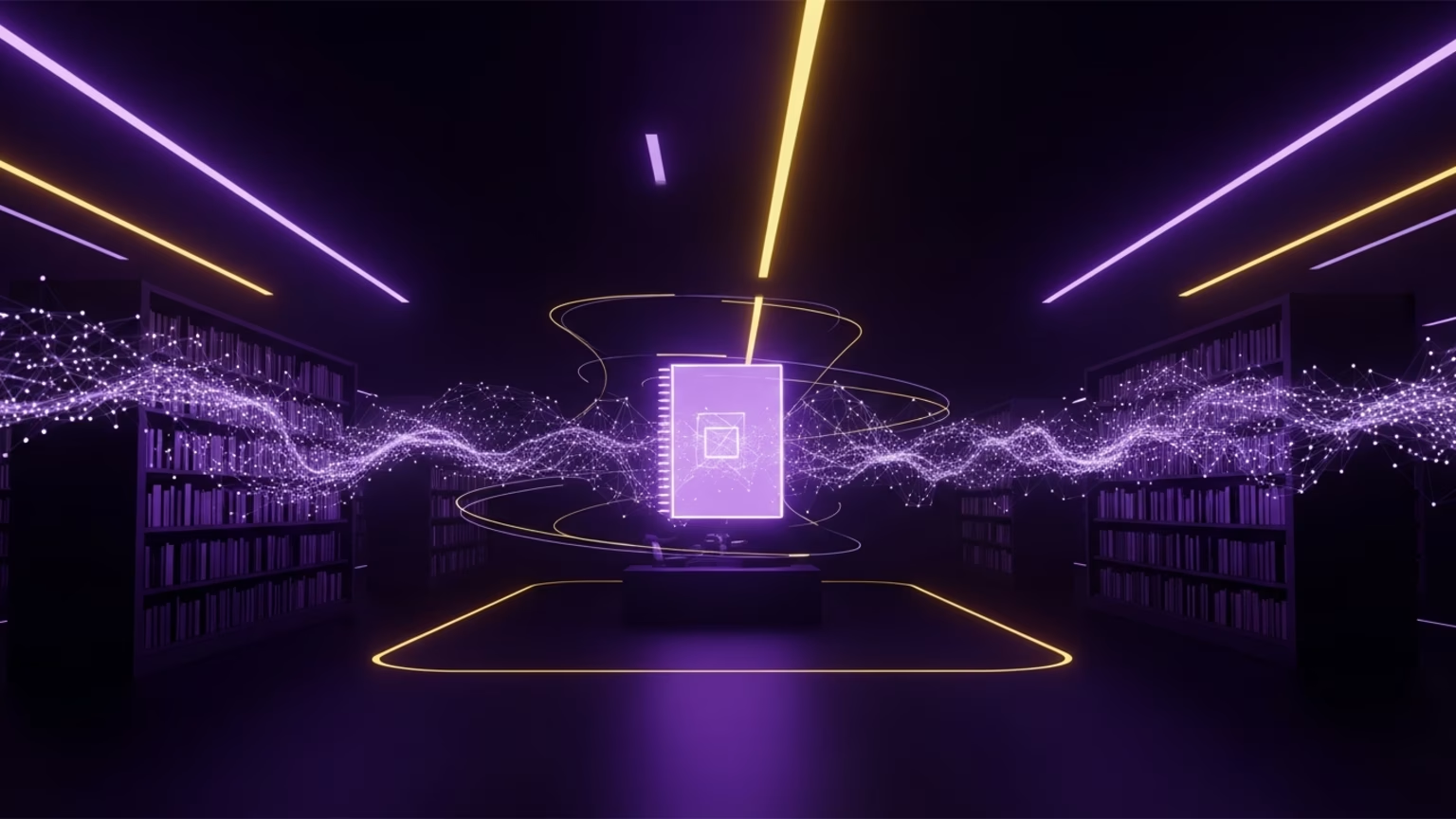
AI & Automation
How to use OpenAI AgentKit to build AI agents
Build, deploy, and optimize AI agents with OpenAI's new AgentKit. A complete step by step guide.

The quick answer
You can start building custom AI agents with OpenAI's new toolkit. Follow these five steps to take your agent from idea to production with OpenAI AgentKit.
- Understand the components: Learn the four main building blocks: Agent Builder, ChatKit, Evals for Agents, and the Connector Registry.
- Map your workflow: Use the visual Agent Builder to drag and drop nodes, logic, and tools to create your agent's process.
- Connect your tools: Securely integrate your agent with business systems like your CRM or Slack using the Connector Registry.
- Build the user interface: Embed a customizable chat window into your application using ChatKit for a seamless user experience.
- Test and optimize: Use Evals for Agents to measure performance, find weak points, and improve your agent's reliability before launch.
What is OpenAI AgentKit?
OpenAI AgentKit is a toolkit for developers to build, deploy, and manage AI agents. It was announced at OpenAI's DevDay, presented as a complete system to move agents from a prototype idea to a fully functional product.
The kit provides all the essential building blocks. It removes much of the friction developers face when creating complex AI workflows. This lets you focus on what the agent does, not just how to build the underlying framework.
The core components of AgentKit explained
AgentKit is not a single tool. It is a set of four interconnected components designed to work together. Understanding each one is key to using the platform effectively.
1. Agent Builder: Your visual workflow canvas
The Agent Builder is the heart of OpenAI AgentKit. It is a visual, drag-and-drop interface where you design your agent's logic. You can think of it as a flowchart for your AI, allowing you to map out complex processes without writing extensive code.
In the builder, you connect different nodes that represent actions, logic checks, and tool integrations. This visual approach makes it fast to prototype and easy for team members to understand the agent's behavior at a glance.
2. ChatKit: A customizable user interface
An agent needs a way to interact with users. ChatKit is a pre-built, customizable chat interface that you can embed directly into your website or application. You can brand it to match your company's look and feel.
This saves you the time of building a chat UI from scratch. It's designed to connect directly to the workflows you create in the Agent Builder, ensuring a smooth and integrated experience for your end-users.
3. Evals for Agents: Measure what matters
Building an agent is only half the battle. You need to know if it works correctly and reliably. Evals for Agents is a suite of evaluation tools designed to test and optimize your agent's performance.
It provides step-by-step trace grading to see exactly where a workflow succeeded or failed. It also includes tools for automated prompt optimization and datasets for testing specific components, giving you the data needed to build trustworthy AI agents.
4. Connector Registry: Securely link your tools
Most useful agents need to interact with other software. The Connector Registry is a secure admin panel that allows you to connect your agent to both internal systems and third-party applications like a CRM or project management tool.
This feature prioritizes security and control. It ensures that your AI agents can access the data and tools they need to perform tasks without creating security vulnerabilities. This is crucial for any business handling sensitive information.
How to build your first AI agent with AgentKit
Moving from theory to practice is simple with OpenAI AgentKit. Here is a practical, step-by-step guide to building a lead qualification agent for your sales team.
Step 1: Define your agent's goal
First, define a clear and specific goal. A vague objective leads to a poor agent. Your goal should be a measurable task. For this example, the goal is: "Qualify a new lead from a website contact form and send a summary to the sales Slack channel."
This defines the start point (form submission), the task (qualification), and the end point (Slack message). This clarity is essential before you open the Agent Builder.
Step 2: Map the workflow in Agent Builder
Next, open the Agent Builder and start mapping the process. You will drag and drop nodes onto the canvas and connect them to represent the flow of information and actions.
Your map might look like this:
- Start Node: Triggered when a new form is submitted.
- Data Input Node: Reads the lead's name, email, and company.
- Tool Node (CRM): Connects to your CRM to see if the contact already exists.
- Logic Node: An "if/then" check. If the contact is new, continue. If not, update the existing record.
- Tool Node (Data Enrichment): Uses a tool like Clearbit to find the company size and industry.
- Logic Node: Checks if the company size is over 50 employees.
- Output Node (Slack): If qualified, posts a summary to the #new-leads channel. If not, sends it to a #nurture channel.
Building AI workflow automation this way helps you visualize the entire process. The OpenAI DevDay keynote showed an engineer building a similar workflow in minutes.
Step 3: Connect your business tools
With the map complete, use the Connector Registry to authorize access to your tools. You'll add your CRM (like HubSpot or Salesforce) and Slack to the registry. This is done through a secure admin panel, often using API keys or OAuth.
This step ensures your agent has permission to read and write data in the systems it needs to function. It keeps all your authentications managed in one secure place.
Step 4: Design the user interaction (if needed)
For our lead qualification example, the primary interaction is system-to-system. However, you might add a human-in-the-loop step. For example, you could use ChatKit to create an internal dashboard where a sales manager must approve a lead before it goes to a sales rep.
This is the power of the toolkit. You can design fully automated workflows or create hybrid systems that combine AI speed with human judgment. These systems are easy to plug into a fully managed website to start capturing value immediately.
Step 5: Test and refine your agent
Finally, run your agent through its paces using Evals for Agents. Create a test dataset with different types of leads: qualified, unqualified, existing contacts, and leads with missing information.
Run the evaluation and review the traces. Where did the agent fail? Did the logic work as expected? Use the results to go back into the Agent Builder and refine your prompts, logic nodes, or tool connections. Repeat this process until the agent performs with high accuracy.
Why AgentKit matters for your business
This new toolkit is more than just a developer toy. It has direct implications for how businesses can leverage AI to become more efficient and competitive.
Build custom AI solutions faster
The biggest advantage is speed. The visual builder and pre-made components drastically reduce the time it takes to go from an idea to a working product. You no longer need months of development to create powerful AI workflow automation.
This allows your business to be more agile. You can quickly spin up agents to solve specific problems, test their effectiveness, and scale the ones that deliver real value.
Make custom AI more accessible
Previously, building custom AI solutions required a team of specialized engineers. OpenAI AgentKit lowers that barrier. A single developer or a small team can now build and deploy sophisticated agents.
This accessibility means more businesses can start using custom AI. It's a key part of an effective digital marketing plan, allowing you to automate tasks and deliver better customer experiences without a massive budget.
Gain a competitive edge with smart automation
Businesses that can automate complex processes will outperform those that cannot. You can use AI agents to qualify leads 24/7, provide instant customer support, or manage internal reporting.
Each process you automate frees up your team to focus on high-value work that requires human creativity and strategic thinking. This creates a powerful competitive advantage that compounds over time.
Getting started with OpenAI AgentKit
The best way to learn is by doing. You can start exploring the toolkit today. Begin by identifying a simple, repetitive task in your business that could be automated.
A good first project might be an agent that categorizes incoming support tickets or summarizes long articles for your team. Start small, prove the value, and then expand to more complex workflows.
For more detailed information and technical specifications, refer to the official OpenAI documentation. Reading the source material is the best next step for any developer ready to dive in. Your journey to building powerful AI agents starts with one clear, well-defined problem.
read more
Similar articles

How to stop the ChatGPT em dash for good

Google NotebookLM guide to deep research
Let’s grow
Start your monthly marketing system today
No guesswork, no back-and-forth. Just one team managing your website, content, and social. Built to bring in traffic and results.




